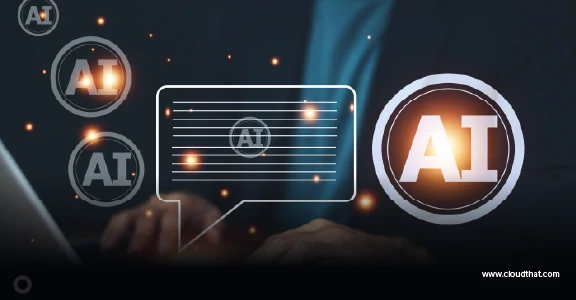|
Voiced by Amazon Polly |
Introduction
Platform engineering is vital in bridging the gap between complex infrastructure and developer productivity in today’s rapidly evolving software development landscape. Backstage, an open-source developer portal framework transforming how organizations manage their internal software ecosystems is at the forefront of this shift.
Pioneers in Cloud Consulting & Migration Services
- Reduced infrastructural costs
- Accelerated application deployment
Platform Engineering
Platform engineering focuses on designing self-service infrastructure and workflows for software engineering teams. Its core aim is to minimize developers’ cognitive load by providing clear, consistent tools and documentation, enabling them to focus more on delivering value through code.
Effective platform engineering delivers four key benefits:
- Decreased mental burden for developers
- Uniform practices across development teams
- Reduced operational maintenance requirements
- Faster software delivery cycles

Internal Developer Platform (IDP)?
An Internal Developer Platform (IDP) acts as a self-service layer that allows engineering teams to manage the full lifecycle of applications. It abstracts underlying infrastructure while standardizing development practices, offering benefits such as:
Key benefits of an IDP:
- Accelerated development processes
- Consistent standards and compliance frameworks
- Simplified onboarding for new team members
- Streamlined operational workflows
- Superior developer experience
IDPs act as internal product offerings, and like any product, their success depends on usability, adoption, and ongoing feedback loops. This is where Backstage excels.
Introduction to Backstage
Developed by Spotify and now hosted by the CNCF (Cloud Native Computing Foundation), Backstage is an open-source platform for building internal developer portals. It combines tools, services, and documentation into a user-friendly interface for developers.
Milestones in Backstage's Journey
- 2016: Created internally at Spotify
- 2020: Open-sourced for public use
- 2020: Donated to the CNCF
- 2021: Reached CNCF incubation status
- Today: Adopted across industries with a vibrant plugin ecosystem

Core Components and Capabilities
- Software Catalog
- Unified service discovery
- Ownership and responsibility tracking
- Integrated API and dependency documentation
- Clear mapping of system relationships

2. Software Templates
- Quickly generate services with pre-defined boilerplates
- Maintain architectural standards
- Embed CI/CD and security practices from the start

3. TechDocs
- Markdown-based authoring
- Version control integration
- Easy publishing and discoverability
- Seamless search integration

4. Kubernetes (Core Feature)
- Monitor workloads across multiple clusters
- View pod health and deployment status
- Enhance operational awareness directly from the developer portal

Plugin Ecosystem
- ArgoCD – GitOps deployment visualization
- Cost Insights – Cloud spending and usage insights
- CI/CD Integrations – Jenkins, GitHub Actions, and others
- Security Tools – Vulnerability scanning, compliance enforcement

Use Cases in Action
Spotify
- Supports 2000+ engineers
- Centralized documentation and onboarding
- Standardized service creation
Other Companies
- American Airlines – Driving consistency in cloud-native adoption
- DAZN – Creating a unified developer experience
- Expedia Group – Scaling microservice management efficiently
Best Practices for Adoption
- Begin with essential features like the Software Catalog and TechDocs
- Gradually integrate plugins based on team needs
- Prioritize high-quality documentation
- Develop a robust onboarding and communication plan
- Contribute to and learn from the Backstage community
The Road Ahead
Backstage continues to evolve. Key roadmap areas include:
- Enhanced observability and Kubernetes integrations
- Expanded plugin marketplace
- Tighter security and access controls
- Broader tech stack compatibility
These advancements make Backstage an ideal fit for future-proof platform engineering strategies.
Conclusion
Backstage provides the foundation for a high-performing internal developer platform for organizations embarking on cloud-native journeys or modernizing legacy systems. Its emphasis on self-service, standardization, and extensibility aligns perfectly with modern software delivery expectations.
Drop a query if you have any questions regarding Backstage and we will get back to you quickly.
Empowering organizations to become ‘data driven’ enterprises with our Cloud experts.
- Reduced infrastructure costs
- Timely data-driven decisions
About CloudThat
CloudThat is an award-winning company and the first in India to offer cloud training and consulting services worldwide. As a Microsoft Solutions Partner, AWS Advanced Tier Training Partner, and Google Cloud Platform Partner, CloudThat has empowered over 850,000 professionals through 600+ cloud certifications winning global recognition for its training excellence including 20 MCT Trainers in Microsoft’s Global Top 100 and an impressive 12 awards in the last 8 years. CloudThat specializes in Cloud Migration, Data Platforms, DevOps, IoT, and cutting-edge technologies like Gen AI & AI/ML. It has delivered over 500 consulting projects for 250+ organizations in 30+ countries as it continues to empower professionals and enterprises to thrive in the digital-first world.
FAQs
1. How does Backstage support compliance and governance?
ANS: – Through standardized templates, automated policy checks, audit trails, clear ownership metadata, and integration with security tools.
2. Is Backstage a good fit for smaller teams?
ANS: – Absolutely. Small teams can start with the Software Catalog, and TechDocs, then gradually expand their implementation. It’s an ideal way to establish best practices early in a team’s growth.

WRITTEN BY Anirudh Singh
Anirudh works as a DevOps Engineer at CloudThat. He specializes in building scalable, automated, and secure cloud infrastructure solutions. With hands-on experience in tools like Terraform, Kubernetes, Jenkins, and AWS services, he plays a key role in streamlining CI/CD pipelines and improving deployment efficiency. Anirudh is passionate about infrastructure as code, cloud-native architectures, and automation best practices. In his free time, he explores new trends and enjoys optimizing workflows to enhance system reliability and performance.


 Login
Login


 June 23, 2025
June 23, 2025 PREV
PREV










Comments